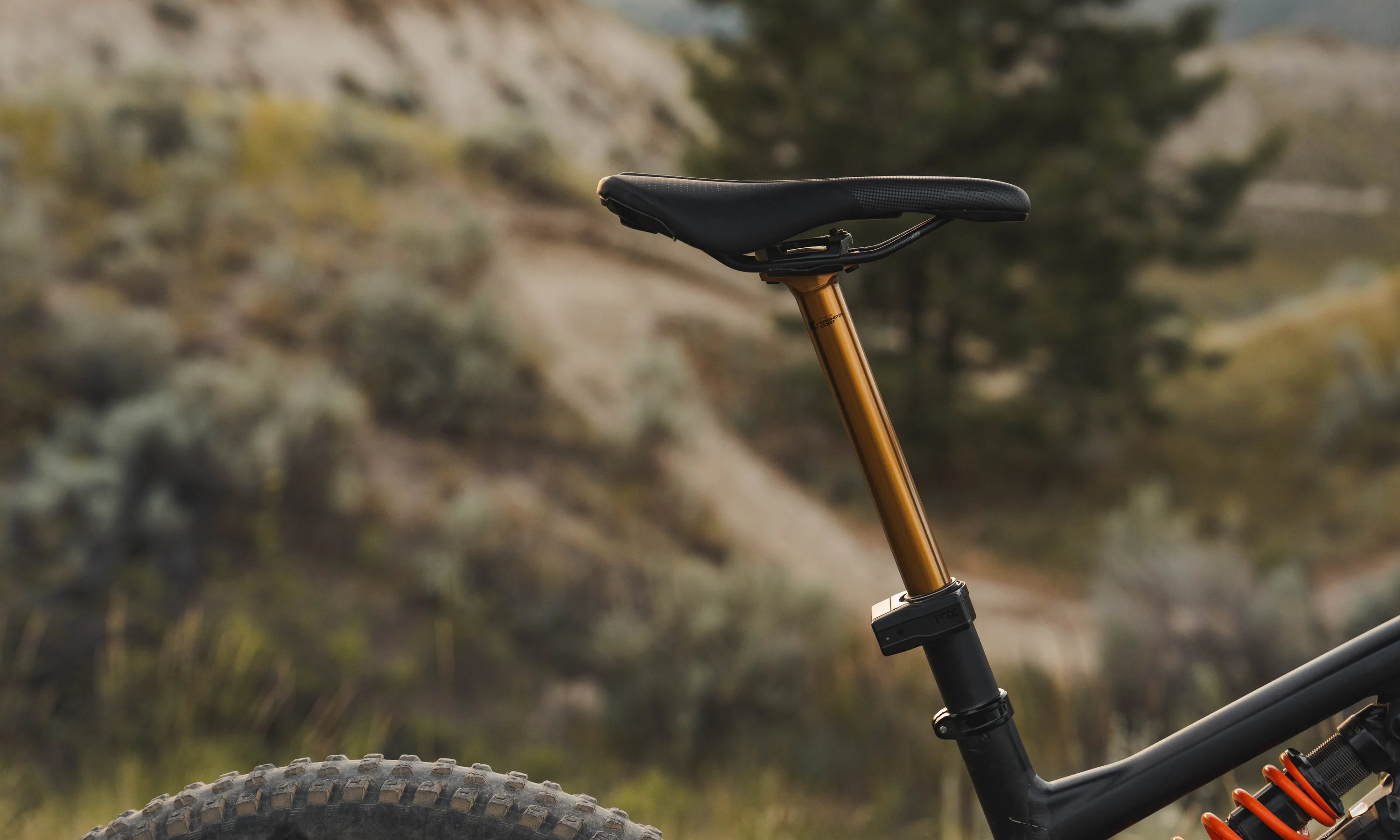Full-suspension bikes are so commonplace that many mountain bikers now take them for granted. Hardtails are getting rarer and every year an exciting new crop of fully suspended bikes gets released.
But only 30 years ago, the concept of any suspension on a mountain bike was essentially a fantasy. It took great determination and bold experimentation by some of mountain biking’s visionary pioneers to create the foundation for the amazing bikes we ride today.
Let’s take a look back through time at some of the most innovative suspension designs in our vintage mountain bike museum. These are the early ancestors of today’s full-suspension bikes. Some are good, some are bad, and some are ugly. Naturally, many other bikes could be added to this list (as you'll see in the comments below!).
It would be hard to convince anyone to ride one of these bikes today, but in their time, there was nothing more exciting and exotic. In each of their own ways, these are bikes that helped pave the way to the amazing machines we ride today.
1985 - Brian Skinner’s MCR Descender
Brian Skinner helped shape the sport by developing some of its most iconic products including Shimano Deore and Deore XT components, the Answer Taperlite bars, A-Tac stem, and Accu-Trax fork, and the Onza Porcupine tires and bar ends. But his most innovative, and maybe least-known creation was the MCR Descender, which was conceived in 1982. 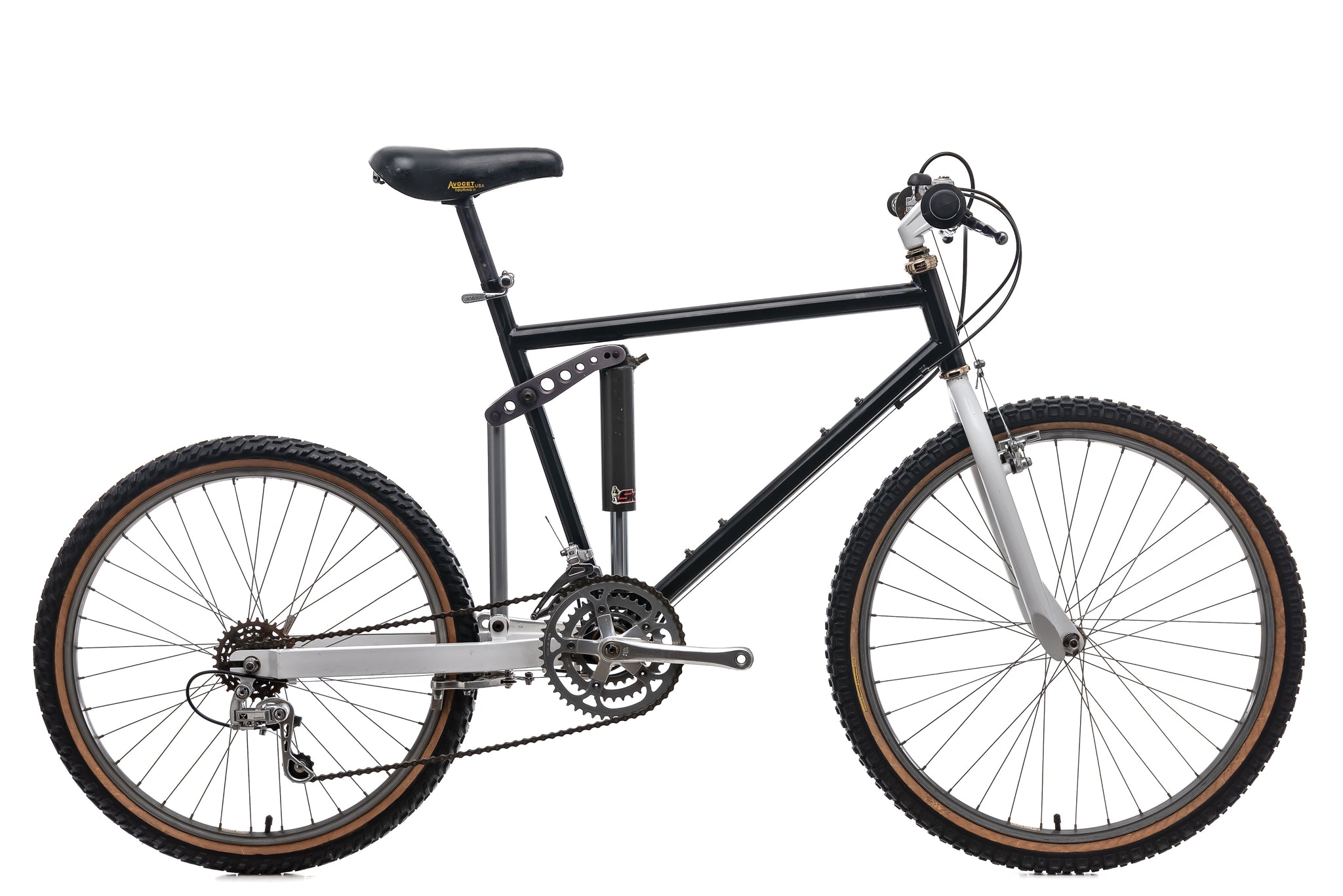
Skinner rode motocross and knew suspension was the key to improving off-road performance. The MCR Descender he designed is credited as the world’s first rear-suspension mountain bike. Yes, that's right, a “rear-suspension” bike. The Descender was designed before telescopic suspension forks for bicycles were invented, so it used a traditional rigid steel fork.
Skinner would have liked to have had front suspension as well, but it was beyond his business's means at the time. He also felt that rear suspension was the more important of the two. His thinking was that a rider’s weight was over the center of the bike, so by placing a pivot in the center, the front wheel would still be able to pivot up, activating the suspension and absorbing some of the impacts. How well this actually worked is questionable.
In another forward thinking move, Skinner tried to augment the suspension with a "mullet" set-up using mixed wheel sizes. The larger 26” front would help absorb bumps, roll over rough terrain, and activate the suspension, while the smaller 24” rear wheel would be stiffer to handle extra load from the suspension and afford more room for the linkage.
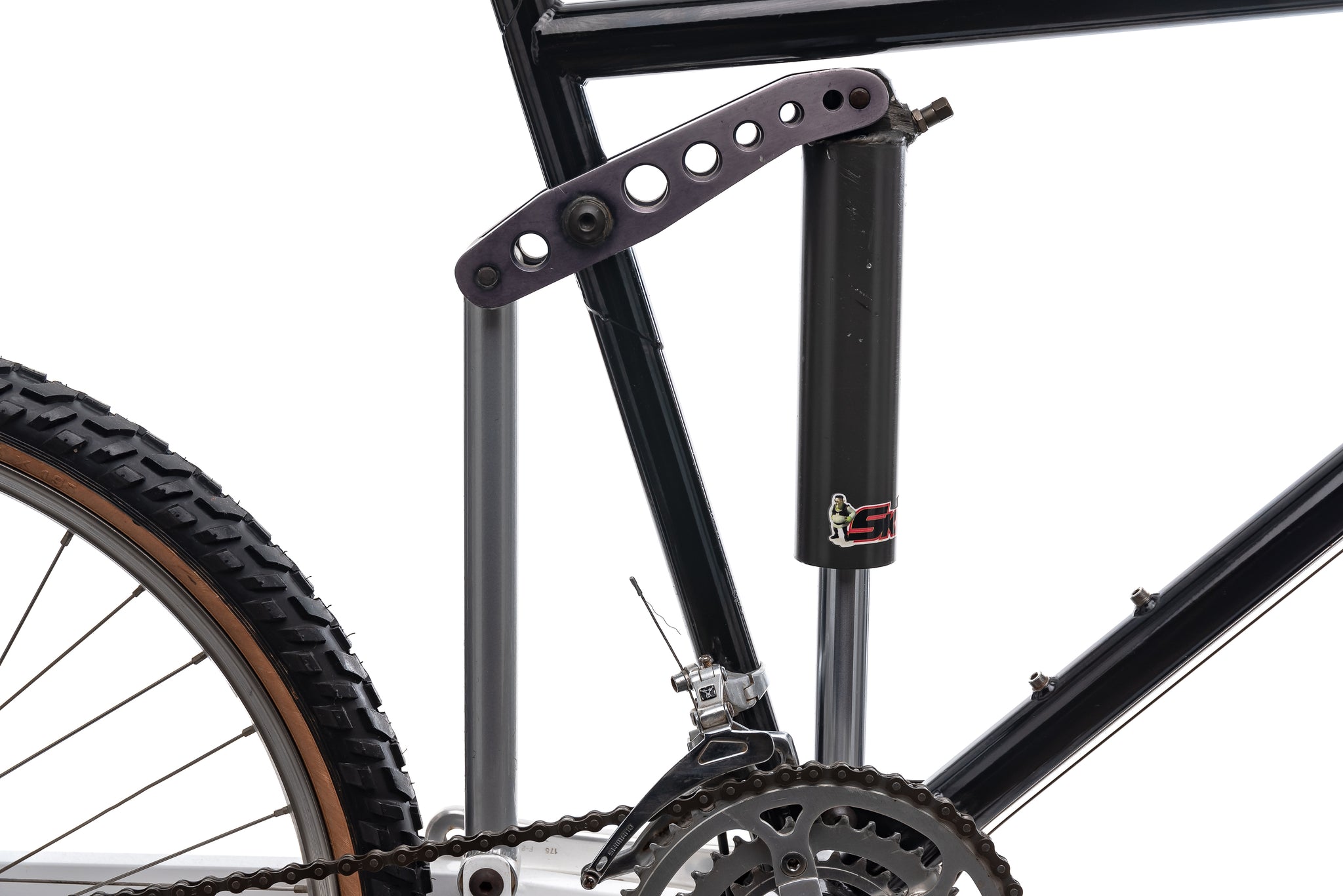
Much of the Descender's design was focused on how to fit the large air shock and still have it “look cool.” The first Descender prototype was built by VVA (Victor Vincente of America) and a second was built with the help of Dan Hanebrink. The production version of the Descender seen here had its prominent suspension linkage modeled after a Kawasaki KX250, and in 1984, Champion Bicycles produced the finished frames which cost $650.
The Descender came with a massive (for the time) six inches of rear travel, the equivalent of most modern enduro bikes. If the bike was bottomed out, the rear wheel had a tendency to rub the suspension strut so there were spacers available to reduce the travel if desired.
A coil shock was in the original plans, but Skinner didn’t like the idea of supplying different coil weights and ended up buying gas shocks from a California company called MotoSports as it went out of business. In all, only 25 MCR Descenders were made before Skinner moved on to develop products for Shimano.
1991 - Travis Brown’s Manitou
In 1990, Manitou founder Doug Bradbury designed and built one of the first bicycle suspension forks in his garage. While most modern forks generally use an air spring, the groundbreaking Manitou fork used elastomers. These were polymer cylinders that acted like a spring and could be tuned using varying levels of firmness. The fork provided a modest two inches of travel and worked as long as it wasn’t too cold outside. The fork was an immediate hit, and at the 1990 World Championships, John Tomac and cross-country winner Juli Furtado both rode Manitou forks.
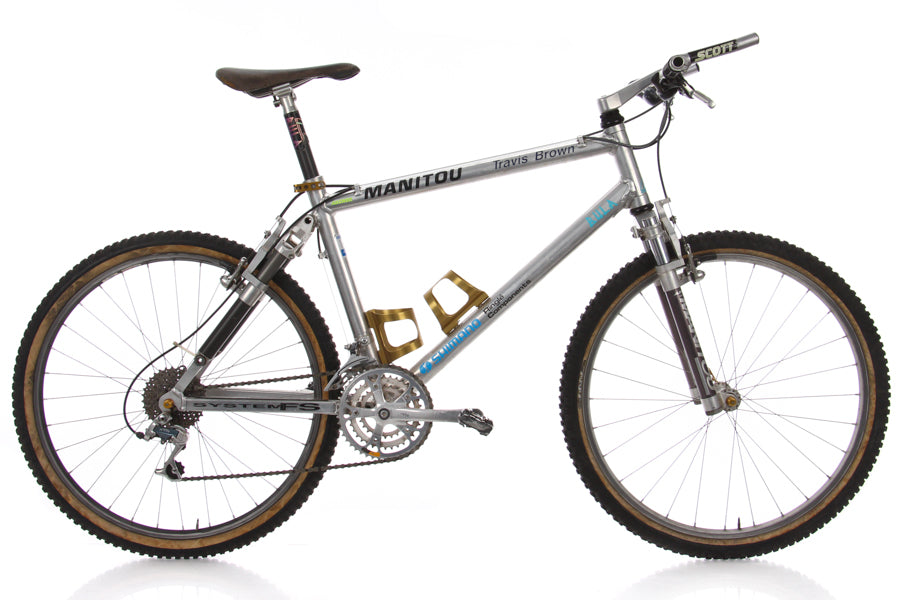
The next year, Bradbury used his Manitou fork to create one of the first full-suspension mountain bikes. He used a second, reconfigured Manitou fork in place of the seat stays, with a pivot behind the bottom bracket, and a second pivot at the top of the stays to articulate the rear end. This unique Manitou mountain bike was more than just a concept or prototype, it was a real race bike, piloted by Travis Brown in the 1992 season.
At the time, this twin-fork design was the simplest solution to add rear suspension to a bike, and it gave the Manitou efficiency that was comparable to hardtail bikes. However, it was not the most effective design for absorbing bumps. The fork legs were pointed rearward, away from the direction of most impacts. Most modern suspension designs provide a rearward axle path at the beginning of the stroke, which is easier for the suspension to move into travel and absorb bumps. Because of the Manitou's non-linkage design, the rear wheel could only move forward and up, greatly reducing the suspension's effectiveness. It was a simple design worth trying though.
1993 - Missy Giove’s Yeti ARC ASLT
Missy “The Missile” Giove was a woman known for her personality and style as much as she was for her riding. Her wild hair, attitude, eccentricities, fearlessness, and undeniable speed earned her a devoted following, World Cup wins, and a downhill World Championship. This Yeti ARC ASLT was her race bike for the 1993 downhill World Cup season.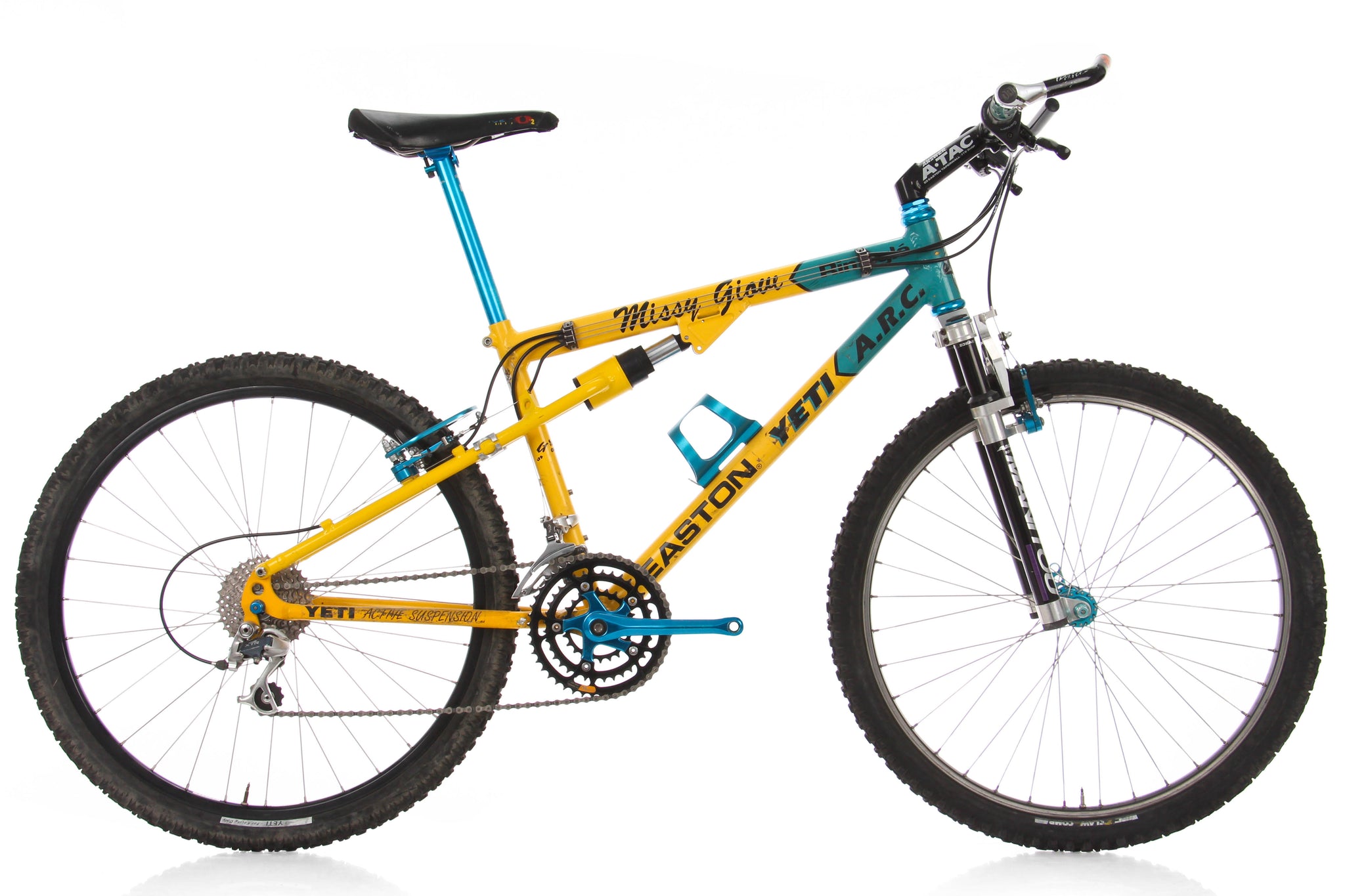
Yeti was one of the early adopters of suspension on mountain bikes. Manitou forks were a common sight on team bikes, and Giove’s used a Manitou 2 fork with some hybrid Manitou 3 and RockShox Judy internals. The left leg has a RockShox Judy spring, and the right has a stack of Manitou 3 elastomers, modified to make the suspension feel more active.
For the rear suspension, the ARC had a simple low-single-pivot design. It’s primitive by today’s standards, but it was state of the art at the time. Similar single-pivot designs became common for many early suspension designs because they kept the suspension simple and reliable. Yeti even continued to use a more refined linkage driven single-pivot design on its ASR cross country bike until 2018.
The suspension drives a custom Risse shock built specifically for the ARC. The shock was robust enough that it still held air when the bike was rediscovered by a vintage MTB collector over 20 years later. Risse Racing Technology is based out of Oregon and continues to design and manufacture suspension components. Its techs were able to fully restore and service the shock, so the bike is actually still rideable.
The shock was attached to the frame with custom welded plates that had two mounts, allowing the bike’s geometry and travel to be slightly altered depending on if the shock was mounted in the high or low position. This design feature was far ahead of its time and now a large number of trail and enduro bikes use a similar method to offer adjustable geometry.
Just sitting on the bike, it's easy to say that the Risse shock is the plushest and highest quality vintage shock in our museum. But it was let down by the ARC's flexy rear end, which tended to sway and flex wildly. With the suspension set in the “low” position, the ARC only had about an inch of travel, but it still managed to pedal quite poorly. Despite all this, Giove rode the bike to third overall in the 1993 season and third at the World Championships in Metabief, France.
1995 - Kurt Stockton’s Kestrel Rubicon Comp Kamikaze
Kestrel designed the Rubicon Comp as a cross-country bike with four inches of front travel and nearly five in the back. It used a modified high single-pivot layout with a top tube that acted as a pivoting beam. A link connected the swingarm to the articulated top tube so that when the rear wheel went up, the saddle went down. This was intended to increase leverage on the Rubicon's shock when the rider was seated, making the ride more forgiving when pedaling in the saddle.![]()
The carbon fiber Rubicon Comp was already one of the most radical bikes of its time, but professional racer Kurt Stockton took it to a new level with his dual-shock Mammoth Kamikaze Special. One night, Stockton was tinkering in his garage noticed that part of the Rubicon's linkage appeared to be about the same length as the Fox Alps shock that was already fitted to the bike. ![]()
As an experiment, he replaced the link with a second Fox Alps shock and it nearly doubled the travel to eight inches. The two shocks combined also allowed Stockton to run less pressure in each which provided a much more forgiving spring rate. Increasing the travel also allowed him to run more sag, which slacked out the Rubicon's head angle and improved the bike's handling at speed.
Even though downhill courses of the era weren't super gnarly, having more travel meant you were less likely to flat. (In the time of tubes, flat tires were a common headache.) For the Mammoth Kamikaze race, Stockton ran a massive 63t chainring to provide high enough gears to continue pedaling at 50-60kph.
Despite the downhill improvements, the Rubicon was still a cross-country bike. The articulated top tube design was intended for seated cross country riding and, as a downhiller, Stockton obviously spent less time sitting than his XC counterparts. Even with two shocks, more travel, and the slacker head angle, Stockton still felt the Rubicon’s geometry and suspension weren’t quite enough when courses got truly steep and sketchy.
The equipment of the time also wasn’t robust enough to handle the rigors of downhill racing. The long and slender swingarm driving the rear suspension was laterally flexy, and it actually snapped during a race in 1994. Kestrel had to quickly build Stockton an updated, fully custom version with additional layers of carbon fiber. The fork and shocks worked well enough for cross-county, but Stockton would blow them out regularly when he subjected them to the abuse of downhill racing.
1998 - Myles Rockwell’s Cannondale Fulcrum DH
The legendary Volvo-Cannondale mountain bike team was the first time a major corporation had committed a large budget to the sport. A huge amount of resources went into R&D and the team hired big-name racers like Missy Giove, Tinker Juarez, and rising downhill star, Myles Rockwell. The Cannondale Fulcrum DH represented its attempt to build the most advanced full-suspension mountain bike ever seen. 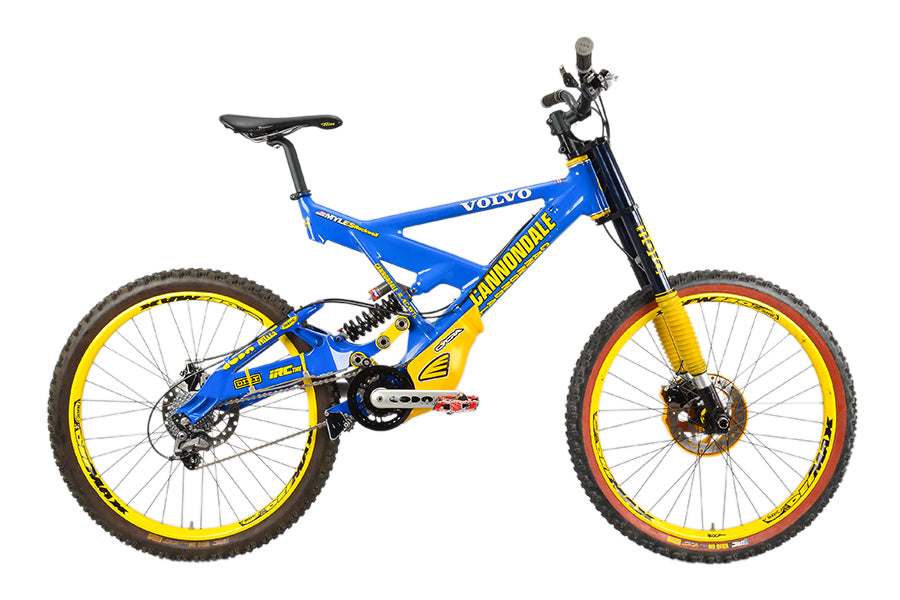
The demands of World Cup racing in the ‘90s were different. The tracks were nearly twice as long as today’s shorter and more intense courses and required significantly more pedaling. Rear shocks were primitive and lacked the valving to keep the suspension from bobbing when racers had to put the power down. Engineers had to build as much pedaling efficiency as possible directly into the kinematics of the suspension design. No bike exemplifies these efforts better than the Fulcrum DH.
The goal of the Fulcrum was to develop suspension that would pedal well, but also move easily through its travel without being affected by pedaling and chain forces. The engineers had to contend with variable chainring sizes, a real puzzle. The wide range of World Cup courses required a similarly broad selection of chainrings. Changing the chainring size would change the anti-squat, anti-rise, and pedal kickback characteristics of the suspension, and sometimes negatively impact performance. The engineers were trying to hit a moving target.

Unwilling to accept the kinematic compromises of swapping between multiple chainring sizes, Cannondale instead developed the complex jackshaft drive system. The Fulcrum suspension was optimized for a single chainring size, and gearing was changed using the jackshaft. It employed three separate chains, four additional cogs, an army of bolts and bearings, and even an eccentric bottom bracket borrowed from a tandem to separate the chainring, thereby providing the chosen gearing with the chainring driving the rear wheel.
The Fulcrum's rear end provided roughly six inches of travel, and the axle path was designed to move rearward toward the end of the stroke. It did so with the help of two, short, rotating links, a feature we now see on many modern suspension designs like DW-Link and VPP.
At the front, Cannondale adapted its Headshok suspension fork into the dual-crown Moto DH. The fork used eight sets of needle bearings and square-profile stanchions to increase torsional stiffness over typical inverted fork designs. The oversized front-end also had interchangeable cups that could adjust the head angle, an advanced feature that wouldn’t be common until 10 years later when Cane Creek introduced its AngleSet.
Ultimately, the Fulcrum DH was too heavy, a headache to maintain, and too expensive. It was estimated that each bike cost $20,000-30,000 to manufacture. The Fulcrum DH had the potential to be further refined, but unfortunately, the program was canceled after just two years.
There have been many historically significant full-suspension mountain bikes that haven't been featured here. Have you ridden an early full-suspension mountain bike? How was it? What's changed? Tell us about your experience in the comments below!
If you want to see more beautiful vintage bikes, browse our extensive vintage bike museum.



